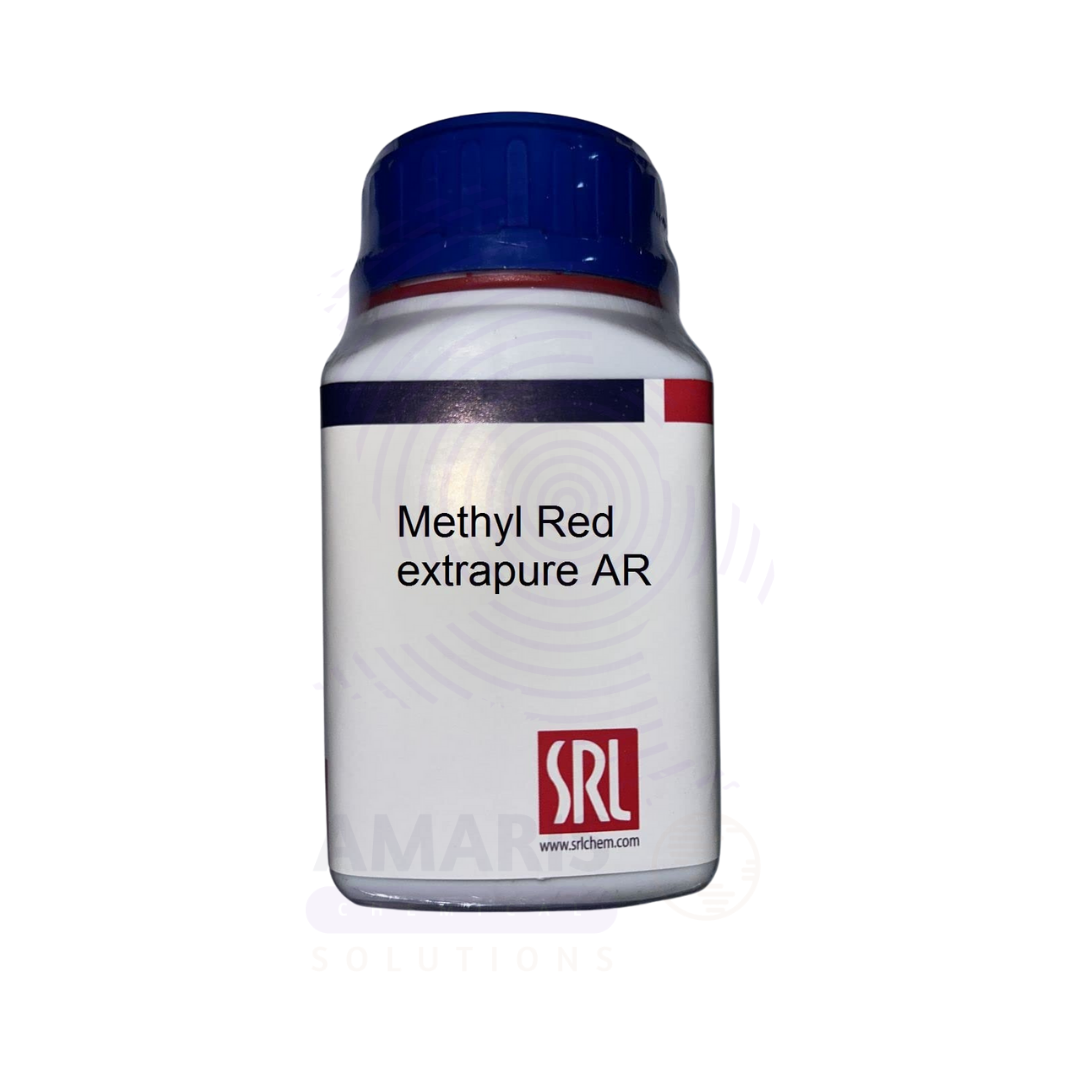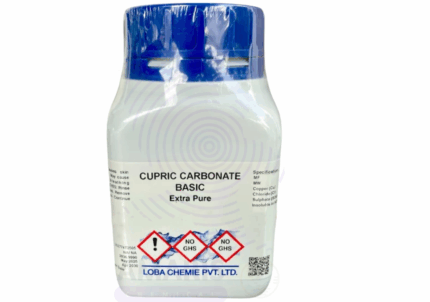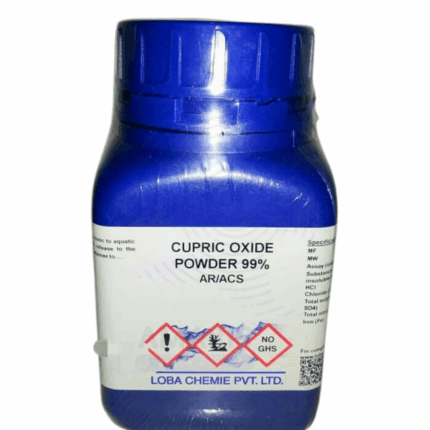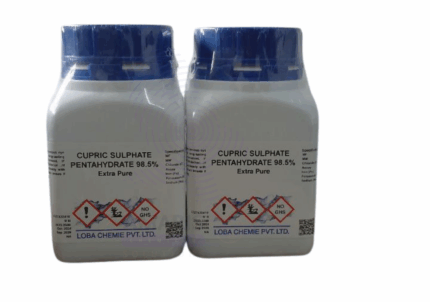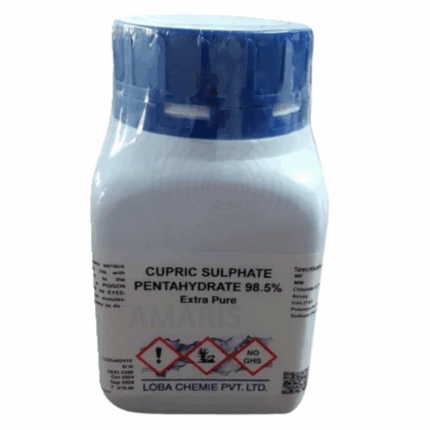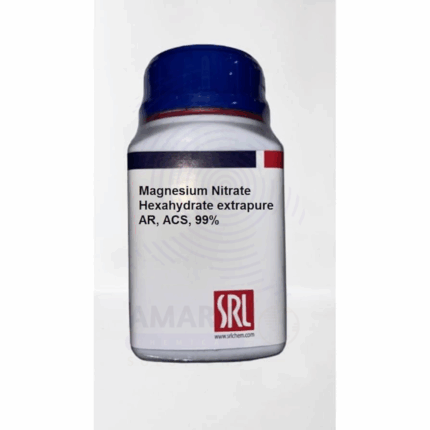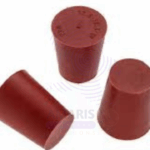
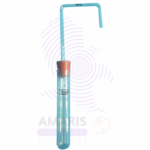
Methyl Red Extra Pure
$ 16.00 Original price was: $ 16.00.$ 15.87Current price is: $ 15.87.
Methyl Red Extra Pure is a high-grade pH indicator commonly used in analytical chemistry, especially in titration processes to identify the endpoint between acidic and basic solutions. It exhibits a clear color change from red in acidic environments (pH below 4.4) to yellow in alkaline conditions (pH above 6.2), making it ideal for monitoring pH transitions in laboratory procedures. Beyond titrations, it is also used in microbiological media to distinguish between types of bacterial metabolism. This extra pure quality ensures excellent sensitivity, precision, and reliability in both educational and professional scientific settings.
Methyl Red Extra Pure
Primary Uses
- pH Indicator – Commonly used in titrations, especially for identifying the endpoint between pH 4.4 (red) and pH 6.2 (yellow).
- Acid-Base Indicator in Microbiology – Essential component of the Methyl Red Test (MR-VP test) for detecting mixed acid fermentation in bacterial identification.
Secondary Uses
- Educational Demonstrations – Used in school and university labs to visually teach acid-base chemistry and indicator behavior.
- Analytical Chemistry – Applied in quality control and analysis protocols requiring precise pH monitoring.
| PACK SIZE |
25 grams Plastic Tin |
|---|
1. Basic Identification Attributes
- Chemical Name: Methyl Red
- IUPAC Name: 2-(N,N-Dimethyl-4-aminophenyl)azobenzene-4-carboxylic acid
- CAS Number: 493-52-7
- Molecular Formula: C₁₅H₁₅N₃O₂
- Molecular Weight: 269.30 g/mol
- Appearance: Dark red to purple crystalline powder
- Odor: Odorless
- Solubility: Slightly soluble in water; soluble in alcohol and acetone
- Grade: Extra Pure
- pH Range (Indicator): pH 4.4 (red) to 6.2 (yellow)
- Melting Point: ~179–181 °C
2. Safety & Hazard Attributes
- GHS Classification:
- Skin Irritant (Category 2)
- Eye Irritant (Category 2)
- Harmful if swallowed (Category 4)
- Hazard Statements:
- H302: Harmful if swallowed
- H315: Causes skin irritation
- H319: Causes serious eye irritation
- Precautionary Statements:
- P280: Wear protective gloves/protective clothing/eye protection
- P301+P312: IF SWALLOWED: Call a POISON CENTER or doctor if unwell
- P305+P351+P338: IF IN EYES: Rinse cautiously with water for several minutes
- Personal Protective Equipment (PPE):
- Lab coat
- Gloves
- Safety goggles or face shield
- First Aid Measures:
- Inhalation: Move to fresh air
- Skin Contact: Wash with soap and water
- Eye Contact: Rinse immediately with plenty of water
- Ingestion: Rinse mouth; seek medical attention
- Fire Hazards:
- Flammability: May be combustible
- Extinguishing Media: Dry chemical, CO₂, foam, or water spray
3. Storage & Handling Attributes
- Storage Conditions:
- Store in tightly closed container
- Keep in a cool, dry place
- Protect from light and moisture
- Handling Tips:
- Avoid contact with skin and eyes
- Use in well-ventilated area
4. Laboratory Applications
- Primary Uses:
- pH indicator in titrations and buffer systems
- Acid–base titration (transitions from red to yellow)
- Secondary Uses:
- Research in dye chemistry and azo compound synthesis
- Staining and microbiological applications
SAFETY PRECAUTIONS
Personal Protective Equipment (PPE):
- Wear a lab coat, nitrile gloves, and chemical safety goggles.
- Use a dust mask or work in a fume hood to prevent inhalation.
Handling:
- Avoid contact with skin, eyes, and clothing.
- Prevent the formation and inhalation of dust or powder.
- Handle with adequate ventilation.
- Wash hands thoroughly after use.
Storage:
- Store in a cool, dry, and well-ventilated place.
- Keep the container tightly closed and away from light and heat.
- Avoid contact with oxidizing agents.
FIRST AID MEASURES
Inhalation:
- Move people to fresh air.
- If breathing is difficult, seek medical attention.
Skin Contact:
- Wash thoroughly with soap and water.
- Remove contaminated clothing.
- Get medical advice if irritation persists.
Eye Contact:
- Rinse cautiously with plenty of water for several minutes.
- Remove contact lenses if easy to do.
- Continue rinsing and seek medical help if needed.
Ingestion:
- Rinse mouth with water.
- Do not induce vomiting.
- Seek medical attention immediately if symptoms occur.
FIRE FIGHTING MEASURES
Flammability:
- May be combustible in fine powdered form.
Extinguishing Media:
- Use dry chemicals, carbon dioxide (CO₂), foam, or water spray.
Hazardous Combustion Products:
- Can emit carbon oxides and nitrogen oxides when burned.
Firefighter Protection:
- Wear self-contained breathing apparatus (SCBA) and full protective gear.


 Preservatives(food)
Preservatives(food) Flavor Enhancers
Flavor Enhancers Acidulants
Acidulants Sweeteners
Sweeteners Antioxidants
Antioxidants Colorants(food)
Colorants(food) Nutraceutical Ingredients (food)
Nutraceutical Ingredients (food) Nutrient Supplements
Nutrient Supplements Emulsifiers
Emulsifiers
 Collectors
Collectors Dust Suppressants
Dust Suppressants Explosives and Blasting Agents
Explosives and Blasting Agents Flocculants and Coagulants
Flocculants and Coagulants Frothers
Frothers Leaching Agents
Leaching Agents pH Modifiers
pH Modifiers Precious Metal Extraction Agents
Precious Metal Extraction Agents
 Antioxidants(plastic)
Antioxidants(plastic) Colorants (Pigments, Dyes)
Colorants (Pigments, Dyes) Fillers and Reinforcements
Fillers and Reinforcements Flame Retardants
Flame Retardants Monomers
Monomers Plasticizers
Plasticizers Polymerization Initiators
Polymerization Initiators Stabilizers (UV, Heat)
Stabilizers (UV, Heat)
 Antifoaming Agents
Antifoaming Agents Chelating Agents
Chelating Agents Coagulants and Flocculants
Coagulants and Flocculants Corrosion Inhibitors
Corrosion Inhibitors Disinfectants and Biocides
Disinfectants and Biocides Oxidizing Agents
Oxidizing Agents pH Adjusters
pH Adjusters Scale Inhibitors( water)
Scale Inhibitors( water)
 Antioxidants(cosmetic)
Antioxidants(cosmetic) Emollients
Emollients Fragrances and Essential Oils
Fragrances and Essential Oils Humectants
Humectants Preservatives
Preservatives Surfactants(cosmetic)
Surfactants(cosmetic) Thickeners
Thickeners UV Filters
UV Filters
 Fertilizers
Fertilizers Soil Conditioners
Soil Conditioners Plant Growth Regulators
Plant Growth Regulators Animal Feed Additives
Animal Feed Additives Biostimulants
Biostimulants Pesticides (Herbicides, Insecticides, Fungicides)
Pesticides (Herbicides, Insecticides, Fungicides)
 Active Pharmaceutical Ingredients (APIs)
Active Pharmaceutical Ingredients (APIs) Excipients
Excipients Solvents(pharmaceutical)
Solvents(pharmaceutical) Antibiotics
Antibiotics Antiseptics and Disinfectants
Antiseptics and Disinfectants Vaccine Adjuvants
Vaccine Adjuvants Nutraceutical Ingredients (pharmaceutical)
Nutraceutical Ingredients (pharmaceutical) Analgesics & Antipyretics
Analgesics & Antipyretics
 Analytical Reagents
Analytical Reagents Solvents(lab)
Solvents(lab) Chromatography Chemicals
Chromatography Chemicals Spectroscopy Reagents
Spectroscopy Reagents microbiology-and-cell-culture-reagents
microbiology-and-cell-culture-reagents Molecular Biology Reagents
Molecular Biology Reagents Biochemical Reagents
Biochemical Reagents Inorganic and Organic Standards
Inorganic and Organic Standards Laboratory Safety Chemicals
Laboratory Safety Chemicals Specialty Laboratory Chemicals(Special Laboratory Equipment)
Specialty Laboratory Chemicals(Special Laboratory Equipment)
 Demulsifiers
Demulsifiers Hydraulic Fracturing Fluids
Hydraulic Fracturing Fluids Scale Inhibitors(oil)
Scale Inhibitors(oil) Surfactants(oil)
Surfactants(oil) Drilling Fluids
Drilling Fluids
 Dyes and Pigments
Dyes and Pigments Bleaching Agents
Bleaching Agents Softening Agents
Softening Agents Finishing Agents
Finishing Agents Antistatic Agents
Antistatic Agents
 Admixtures
Admixtures Waterproofing Agents
Waterproofing Agents Sealants and Adhesives
Sealants and Adhesives Curing Compounds
Curing Compounds Concrete Repair Chemicals
Concrete Repair Chemicals Anti-Corrosion Coatings
Anti-Corrosion Coatings
 Surfactants(cleaning)
Surfactants(cleaning) Builders
Builders Enzymes
Enzymes Solvents (Cleaning)
Solvents (Cleaning) Fragrances
Fragrances
 Electronic Chemicals
Electronic Chemicals Catalysts
Catalysts Lubricants
Lubricants Photographic Chemicals
Photographic Chemicals Refrigerants
Refrigerants Automotive chemicals
Automotive chemicals Pyrotechnic Chemicals
Pyrotechnic Chemicals
 Biodegradable Surfactants
Biodegradable Surfactants Bio-based Solvents
Bio-based Solvents Renewable Polymers
Renewable Polymers Carbon Capture Chemicals
Carbon Capture Chemicals Wastewater Treatment Chemicals
Wastewater Treatment Chemicals
 Pigments
Pigments Solvents(paint)
Solvents(paint) Specialty Coatings
Specialty Coatings Binders/Resins
Binders/Resins Additives
Additives Driers
Driers Anti-Corrosion Agents
Anti-Corrosion Agents Functional Coatings
Functional Coatings Application-Specific Coatings
Application-Specific Coatings
 Fresh Herbs
Fresh Herbs Ground Spices
Ground Spices Whole Spices
Whole Spices Spice Blends
Spice Blends Dried Herbs
Dried Herbs
 Leavening Agents
Leavening Agents Dough Conditioners
Dough Conditioners Flour Treatments
Flour Treatments Fat Replacers
Fat Replacers Decoratives
Decoratives Preservatives(baking)
Preservatives(baking)
 Plasticizers & Softeners
Plasticizers & Softeners Reinforcing Agents
Reinforcing Agents Adhesion Promoters
Adhesion Promoters Vulcanizing Agents
Vulcanizing Agents Antidegradants
Antidegradants Blowing Agents
Blowing Agents Fillers & Extenders
Fillers & Extenders Accelerators & Retarders
Accelerators & Retarders